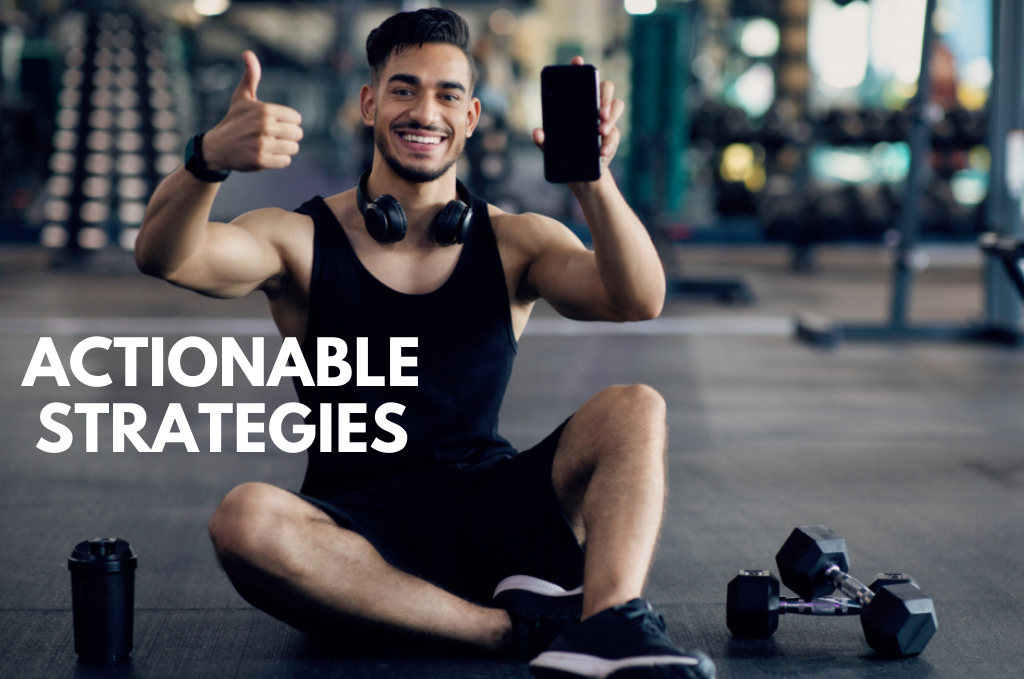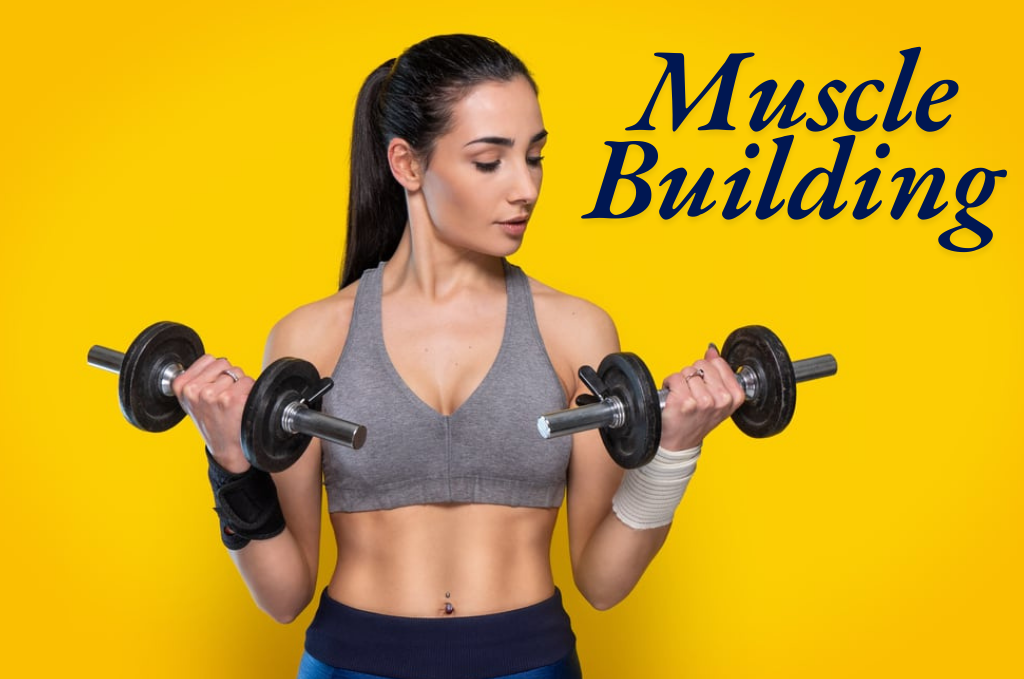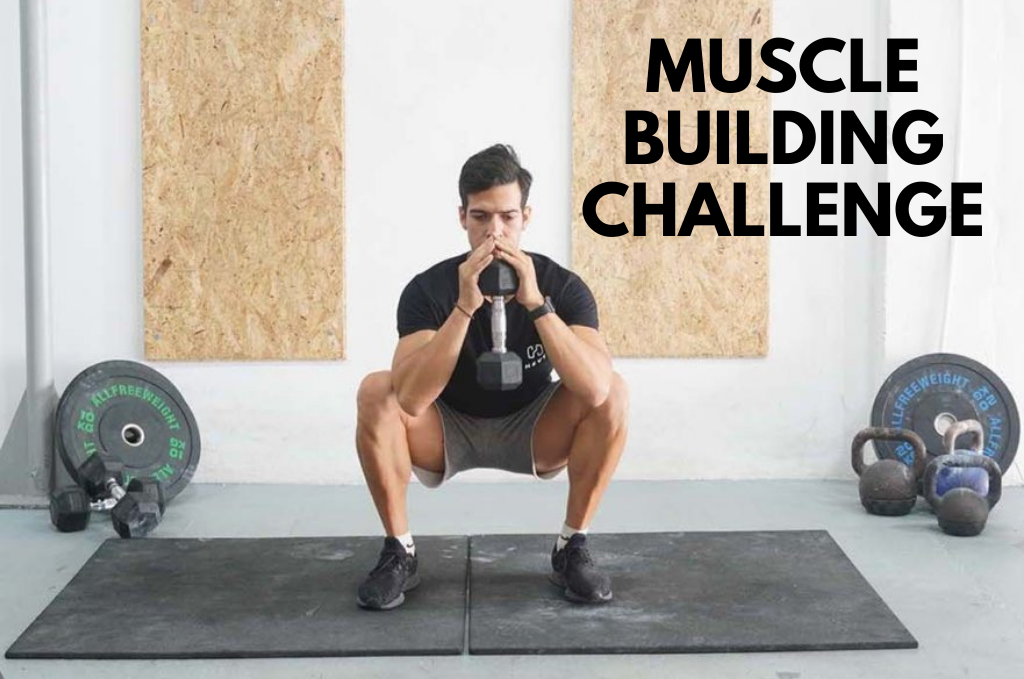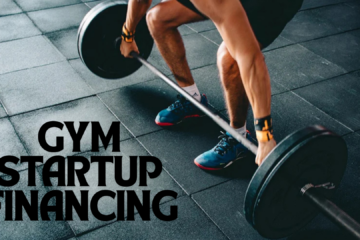Hello people! How to gain muscle without going to the gym? Try this 7-day Challenge!
Gaining muscle mass doesn’t demand a health club subscription, fancy machines, or hi-tech workouts. But for all these, imagine you have just seven days, and you are willing to build your body. You can start your bodybuilding without any equipment.
No Gym? No Worries! This seven-day muscle-building challenge timetable will help get you to the next level, whether it is your first time at the gym or if you’re bored with your current workout routine.
In this article, however, we will help you complete the 7-day muscle-building Challenge and explain why bodyweight exercises are necessary, what to eat, and how to recover. We will also examine why bodyweight training is as effective as or even more effective than weight lifting when applied correctly.
Let’s dive in!
Table of Contents
7 Actionable Strategies On How To Meet Your Goals

Why Choose A 7-Day Muscle Building Challenge?
This means that the most significant challenge people face today, where everybody is busy with their daily activities, is time. Most people may find it difficult to get into a gym and spend a couple of hours there per week.
Luckily for many, bodybuilding is not synonymous with lifting iron and spending time in a gym. The concept here is that a proper strategy can produce excellent performance in just one week.
The Benefits of Integrated Bodyweight Training
Weight training is an efficient and all-purpose form of exercising that more and more individuals with time constraints, few implements, or space can participate in.
Strangely enough, the National Academy of Sports Medicine (NASM) has indicated that bodyweight training exercises are as effective as weightlifting exercises in the building of muscle strength, muscle hypertrophy, and muscular endurance.
Here are some of the Benefits:
- No Equipment Required: Bodyweight exercises require no equipment other than your body and some spare room. No gym needed or expensive equipment to get it done.
- Improved Functional Strength: On the other hand, bodyweight movements involve multiple muscles of the body at a time to build strength, balance, flexibility, and agility, with the ultimate goal of improving functional capacity in daily living.
- Convenience: Cardiopulmonary means that bodyweight exercises can be done in any location: at home, at a park, or even on vacation. No gym is needed!
- Scalability: Since bodyweight exercises are flexible, you can raise your level of Challenge by modifying the number of reps or sets or trying out harder exercises.
Muscle Building 7-Day Challenge

This is a 7-day Muscle Building Bodyweight only Challenge where you will build muscle and strength in record time. It’s based on compound actions, those movements involving many muscles altogether because the goal of the plan is to build muscle in as little time as possible.
Day 1: Full Body Workout
Experts suggest beginning by effectively building muscles from all body parts, especially the large ones.
- Push-Ups (3 sets of 10-15 reps): One of our classic bodyweight exercises suitable for building the chest, shoulder, and triceps muscles.
- Squats (3 sets of 20-25 reps): A good pounding on the lower body region, especially great for working on the quad, hamstrings, and gluteal muscles.
- Plank (3 sets of 30-60 seconds): This exercise influences the central muscle, enhancing stability and balance.
- Pull-ups or Inverted Rows (3 sets of 5-10 reps): If you have access to a bar or a solid surface where your feet can dig in, this one also works the back, biceps, and forearms.
- Lunges (3 sets of 10 reps per leg): Good for strengthening the legs and for balance.
Day 2: Rest and Recovery
It is equally important to give the body a chance to repair, replace its energy, and heal after circuits as it is to exercise. Spend the holiday rest, enabling your muscles to build up so that they can shed last week’s workouts. This day should consist of exercises that tend to enhance muscle flexibility, not instances of injury.
Recommended activities:
- Swing the legs, arm circles: This involves placing the body weight on a foam roller so as to stretch the sore muscle away.
- A yoga session is needed to ensure they are active while waiting to heal, and a round trip around the house is required to use up some energy.
Day 3: Upper Body Strength
Strength training on day three targets the upper body. Liberated as a program, it will mainly consist of compound exercises that target the development of chest, back, shoulder, and arm muscles.
- Incline Push-Ups (3 sets of 12-15 reps): Among implemented modifications of push-ups that develop the upper part of the chest muscles.
- Bench dips sometimes referred to as chair dips (3 sets of 10-12): are also good for the triceps since they help build the shoulders and chests.
- Pull-ups or Inverted Rows (3 sets of 5-10 reps): If, by chance, you were not able to complete them on the first day of the presentation, then it is high time to do so.
- Pike Push-Ups (3 sets of 8-12 reps): Focused on upper limbs with major concern with the shoulder area given to the chest.
- Diamond Push-Ups (3 sets of 8-10 reps): This exercise particularly accommodates the workout of the triceps and chest.
Day 4: Lower Body Strength
Today’s workout returns special emphasis to a single affix and several movements that workout the muscles of the legs, glutes, and abominations.
- Bulgarian Split Squats (3 sets of 10-12 reps per leg): This effective motion falls under stationary exercises and is usually a single-limb exercise that emphasizes the quads and glutes.
- Pistol Squats (or assisted pistol squats) (3 sets of 5-6 reps per leg): An exercise involving only one leg and ought to be done to boost the strength and balance of the lower limbs.
- Glute Bridges (3 sets of 12-15 reps): This exercise is advantageous for the glute and hamstring muscles.
- Mountain Climbers (3 sets of 30 seconds): Good cardio move, the abs and the legs.
- Leg Raises (3 sets of 10-15 reps): This exercise incorporates both the rectus and the oblique lower abdominal muscles.
Day 5: Core Focus
A core serves the whole body and muscle mass well. Today, you will do several lower bacterial replicate exercises targeting the abs, obliques, and lower back.
Plank (This should be done in 3 sets of 30-60 seconds. With slight modification, here is
What it should look like:
- We perform the Side Planks at 3 sets of frequency of 3 sets in 10-30 seconds per side.
- Leg Raises ( 3 sets of 12-15 reps).
- Russian Twists (In statutory sets, set each statutory part of the exercise with 20 reps on each side).
- ‘Flutter Kicks’ (3 sets of 30 counts of one thousand).
- Day 6: Full Body Workout
- On day six, you will be back in a full-body workout similar to Day One, but the exercises will be slightly different.
- Burpees (3 sets of 10-15 reps): An intensely charged lift exercise that can reach the upper body, particularly the chest, legs, and abdominal area.
- Jump Squats (3 sets of 10-12 reps): are a workout that increases lower body force production and fatigue rate.
- Exercises like the Push-Ups (The three sets with reps between 15-20).
- Chins or chin-ups (back-bend, three sets of six-ten.)
- Regarding the lunges, 12-15 of these were done for three sets of exercises for each leg.
Day 7: Utilize Opportunities in a Workplace
You should finish the challenge with an active recovery day. Focus on the active relaxation of muscle tissue as much as possible and help your body evacuate as many stressors as possible for the next week’s work.
Free stretching and relaxation are enjoyed through doing Yoga or Pilates in free time.
Tight muscles seem rigid like an elastic band, and they can be relieved through foam rolling.
- Walking and light running for some dynamical warm down.
- Nutrition for Muscle Growth
As crucial as it is to discover that body weight is an excellent predictor of muscular exercises, nutrition is also vital. If you want to get ripped in this seven-day challenge or build more muscles, you must eat the correct amount of food.
Typical Macrominerals
Any diet plan needs to include the right proportion of protein because this nutrient is key in building and repairing muscles, among other uses.
In this respect, it is wise to go for skinless poultry and game birds, fish, and soybean products such as tofu, better eggs and beans, and lean meats. According to the ACSM, an adult should take between 1.6 and 2.2 g of protein per kg of body weight in a given day.
- Carbohydrates: Carbohydrates are the ingredients that provide energy for a high-intensity workout or power punch.In addressing the meal plan, all the relatively complex carbohydrates are permitted. However, they refer only to fruits and vegetables.
- Healthy Fats: Some essential fatty acids can only be acquired through avocados, nuts, olive oil, and the like since the body requires them to synthesize hormones, among other things.Hydration: Muscles require fluids for repair and normal operations; people also need them for energy. However, the example muscle-building meal plan includes drinking a lot of water throughout alley the day:
- Breakfast: Spinach scrambled eggs, whole sunny-side-up wheat bread, and avocado.
- Lunch: Grilled chicken, quinoa salad, and baked vegetables are some healthy foods that a patient can recommend.
- Snack: A second excellent snack combo is Greek yogurt with berries together with almonds.
- Dinner: For the entree, you get barbecued salmon. To complement the dish, you have sweet potatoes mashed up with a preferred vegetable and a serving of broccoli.
Rest and Recovery
In this case, muscle buildup is not an easy process, and it requires some time to achieve. But seriously, all of the muscle bulk is gained during the rest and recovery phase at the subcellular level.
If this is not accomplis1hed, a person will overtrain himself, which will act as a vice for his or her workout program. Muscle building also requires that individuals take enough rest. Doctors recommend that one should aim at taking between seven and nine hours of sleep per day.
The following video explains about Rest and Recovery:
Conclusion
Muscle-building plans for newbies are the most effective to start with the week of the challenge: if you do not have a gym membership, it can be done at home.
Since this challenge doesn’t require equipment or a proper gym, it will allow you to tone your muscles and empower yourself while learning a healthy habit that you can keep up beyond the first week.
If you do your body weight, respect your eating habits, and see to it that your body recuperates enough and is fed sufficiently, you should have no difficulties walking around with some pumped-up muscles.
Remember, consistency is key. Still working on it, pushing yourself, and be prepared for a new look! Ready to build muscle? Welcome to the new challenge – welcome to the 7-day challenge – start it today!
FAQ
1. Can I get muscles without exercising at the gym?
Yes, based on my training, bodyweight training is perhaps the best way to develop muscles without going to the gym.
2. What exercises are involved in the 7-day challenge?
Chin lifts, lower back lifts, abdominals curls, bounds, lower extremity presses, back elevations, and many more bodyweight exercises.
3. How many minutes of a day should an individual dedicate to accomplishing this?
Ideally, it takes 30-45 minutes in the gym to carry out each workout session.
4. Can newcomers do the 7-day muscle-building challenge?
Of course, it is, and I’d also like to point out that this particular exercise can be provided for each level of fitness and newcomer as well.
5. During the challenge, I have mostly had to make decisions about what to eat to build more muscles.
As for recovery, it is suggested to concentrate on protein foods, healthy fats, and complex carbohydrates.




